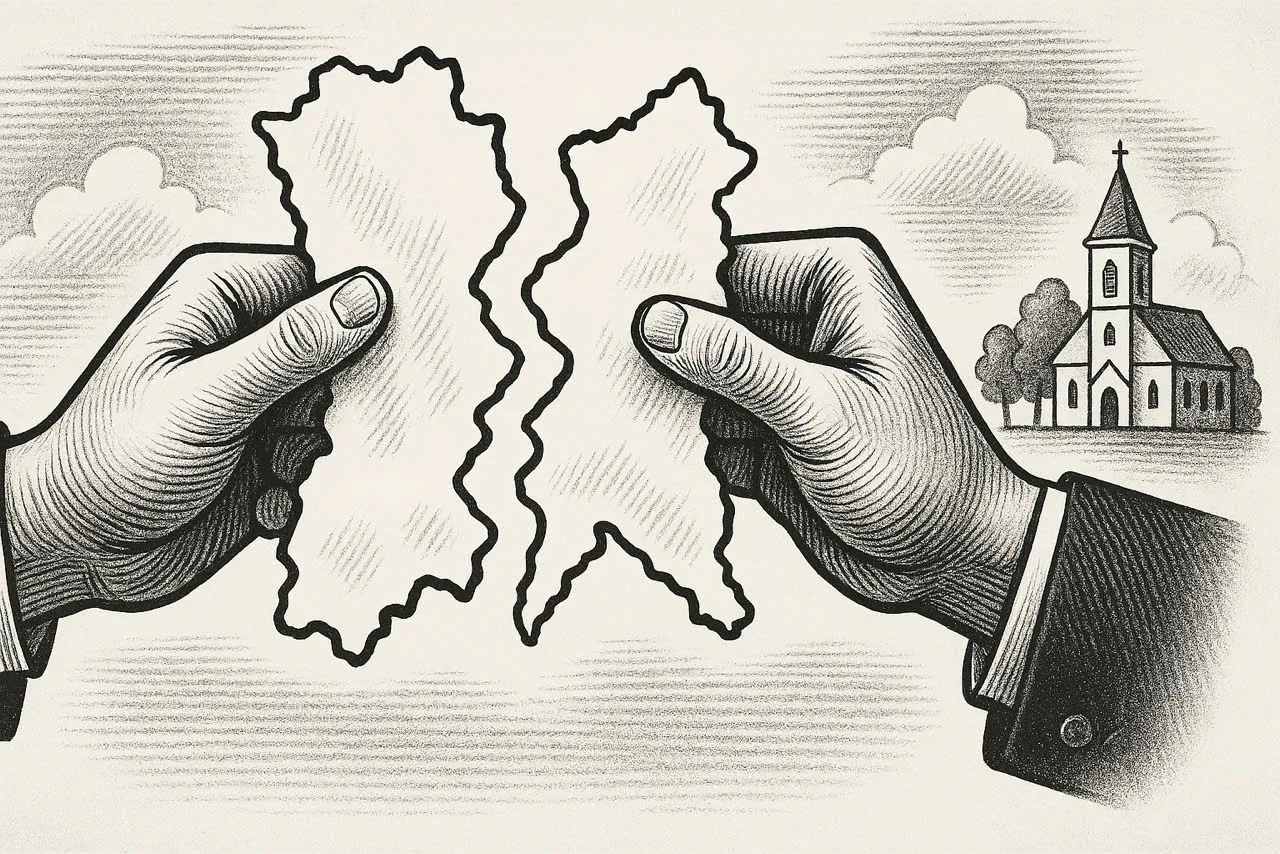Merging provinces: When homeland is more than just a name
Welcome to Words on the Street, where everyday news becomes a lens to explore the deeper layers of culture, identity, and change.
THE HANOI TIMES — Dang Minh Hoa, a native of Dong Hoi in the central province of Quang Binh, was overcome with emotion upon learning that her birthplace would lose its name as a result of the planned merger with neighboring Quang Tri.
However, she said she would embrace the change with a positive spirit, reiterating that her love for her hometown will never fade, no matter what happens to its name. She also believes the change will make her province stronger.
Hoa's sharing comes at a time when Vietnam planned to merge dozens of provinces to create momentum for long-term growth.
Resolution No. 60-NQ/TW, adopted on April 12, 2025 at the 11th Plenary Session of the CPV's 13th Central Committee, brought down the number of provinces and cities from 63 to 34.
Of the 34 new provinces and cities after the merger, 11 will retain their original toponyms, including Hanoi, Hue, Lai Chau, Dien Bien, Son La, Cao Bang, Lang Son, Quang Ninh, Thanh Hoa, Nghe An, and Ha Tinh.
The remaining 23 will be the result of the merger, including Tuyen Quang, Lao Cai, Thai Nguyen, Phu Tho, Bac Ninh, Hung Yen, Haiphong, Ninh Binh, Quang Tri, Danang, Quang Ngai, Gia Lai, Khanh Hoa, Lam Dong, Dak Lak, Ho Chi Minh City, Dong Nai, Tay Ninh, Cantho, Vinh Long, Dong Thap, Ca Mau, and An Giang.
From a policy perspective, this merger is expected to give impetus to the development of the localities and help lead Vietnam into a new era - the era of national rise, as envisioned by General Secretary of the Communist Party of Vietnam To Lam.

Officials and experts believe that reducing the number of subnational entities from 63 to 34 is a strategic step to improve regional connectivity and promote balanced and sustainable growth. It is expected to streamline the administrative system and increase government efficiency while mobilizing resources for larger development goals.
The merger will also save hundreds or thousands of billions of dong a year in administrative, personnel, and management costs. These significant savings can be used to build more roads, schools, and bridges, improving people's daily lives.
This approach also applies to the merger of Quang Tri and Quang Binh. It is not just about administrative reform, but development opportunities. A larger provincial territory will make key infrastructure such as National Highway 1, the North-South Railway, the Cam Lo-Lao Bao Expressway, and Dong Hoi Airport more inviting to investment.
Sites such as Phong Nha - Ke Bang National Park could continue to grow as international destinations. The merger will unlock new potential in tourism, renewable energy, cross-border trade, and logistics, boosting competitiveness.
This is reminiscent of the merger of Ha Tay province with Hanoi in 2008. At the time, there were doubts about what the future would hold for the new subnational entity. But 17 years on, the benefits of the merger have been proven, and the former province of Ha Tay has made great strides in development.
Today, Hanoi is the first place in Vietnam where 100% of its communes meet the new rural standards, most of them in the former Ha Tay. Living conditions in rural and mountainous areas have gotten better, proving that the move was the right one.
Former Ha Tay localities also benefit from special policies that only Hanoi is entitled to, such as the amended Capital Law and large-scale planning strategies.
In a broader sense, these mergers represent an opportunity for change, for local governments and people. So the real question now is: "What can we do to make the most of these opportunities?" rather than continuing to debate the policy.
Along with the many benefits, some concerns merging provinces could erase local cultural identities and established brand names.
Let's not worry. No one would forget where they came from. Residents of Chuong My, Thanh Oai, or My Duc still proudly said: "I'm from Ha Tay," even after their hometowns became part of Hanoi.
Name is just letters on paper
Some fear that famous local products will lose their geographical indications, such as Nam Dinh's steamed ramie dumpling becoming "Ninh Binh steamed ramie dumpling", or Hai Duong's mung bean cake being rebranded as "Haiphong mung bean cake."
However, these views are overly narrow and unhelpful. Merging does not erase history, it extends the path of progress for local communities.
Vietnam needs to adapt to a larger and more effective rhythm. Some will be saddened by the loss of familiar provincial toponyms, but to move forward, we must be willing to let go of outdated labels to embrace a future full of promise.
After nearly two decades, the former Ha Tay remains a peaceful land and an important gateway between Hanoi and the western and southwestern regions.
It's natural to feel nostalgic for the old, but names on paper can't erase what people carry in their hearts.
Every place lives on in its stories, folk songs, village festivals, and traditions. Don't mourn the changing boundaries. Let them blend into a bigger picture, where each land keeps its spirit alive and traditions flourish in a more united nation.
The strength of Vietnam is not in the number of its provinces, but in the unity that has carried this nation through war, hardship, and hope.
As for Quang Tri and Quang Binh, now as one big family, we are not only preserving the legacy of our ancestors, but also building a stronger presence on the national economic and tourism map.











